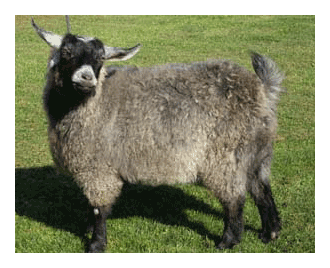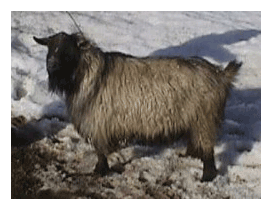 In the canine world it’s not uncommon for people to take different breeds of dog to try and create a new one that carries all the great characteristics of each breed. Cockapoo’s and Puggle’s are examples of hybrid dogs that have become very popular, and while it has worked will in the puppy world, you don’t tend to think of goat’s as being ripe for cross breeding. Yet that’s exactly what happened back in the 80’s when Katharine Jorgensen decided she wanted to create an animal that had great character traits, but which would also be something that would have a level of monetary value for its owner.
In the canine world it’s not uncommon for people to take different breeds of dog to try and create a new one that carries all the great characteristics of each breed. Cockapoo’s and Puggle’s are examples of hybrid dogs that have become very popular, and while it has worked will in the puppy world, you don’t tend to think of goat’s as being ripe for cross breeding. Yet that’s exactly what happened back in the 80’s when Katharine Jorgensen decided she wanted to create an animal that had great character traits, but which would also be something that would have a level of monetary value for its owner.
Katharine already had experience as a breeder and judge of NGPA pygmy goats, and during a trip to an Indian reservation she saw and fell in love with the look of the longhaired goats that were bred there. She thought about her passion for spinning, knitting and weaving, and became convinced that pairing her pygmy goats with AAGBA angora’s would create a breed that was not only cute and friendly, but would also have a mohair coat that would be much in demand among others who shared her passion for crafting with fibers.
It turned out that her belief was correct, and the animals that were produced by the union of the two styles of goats were exactly as Katharine had envisioned. They became an instant hit with breeders, all of whom marveled at the success rate of the new breed of goat. The fleece that the pygora goats, as they were soon named after a brief flirtation with the homestead goat moniker, was exactly as Katharine imagined it would be, and the demand for the fiber soon made pygora breeding a very popular business opportunity.
 The Pygora Breeders Association (PBA) was formed in 1987, and they put in place some very strict guidelines that had to be followed in order for a pygora kid to be registered as a purebred. That meant that the offspring could not be made up of more than 75% of either pygmy or angora, and that both parents had to be registered with the PBA in order for the kid to be recognized as a purebred pygora goat.
The Pygora Breeders Association (PBA) was formed in 1987, and they put in place some very strict guidelines that had to be followed in order for a pygora kid to be registered as a purebred. That meant that the offspring could not be made up of more than 75% of either pygmy or angora, and that both parents had to be registered with the PBA in order for the kid to be recognized as a purebred pygora goat.
While showing pygora’s has also become more common, owners need to be aware that there are also guidelines in that regard too. First generation pygora’s are actually referred to as hybrids, and are therefore not granted purebred status. There are also minimum height requirements which are set at 18 inches for a doe and 23 for a buck. It’s not just all show and fleece though, as many pygora owners look at their animals as pets. Like many successful cross breeds, the pygora has adopted the best of both parents and kids tend to be very friendly, whilst also possessing an innate sense of fun and curiosity. The pygora goat is a multi-purpose animal, which may help explain why their popularity is at an all-time high.


